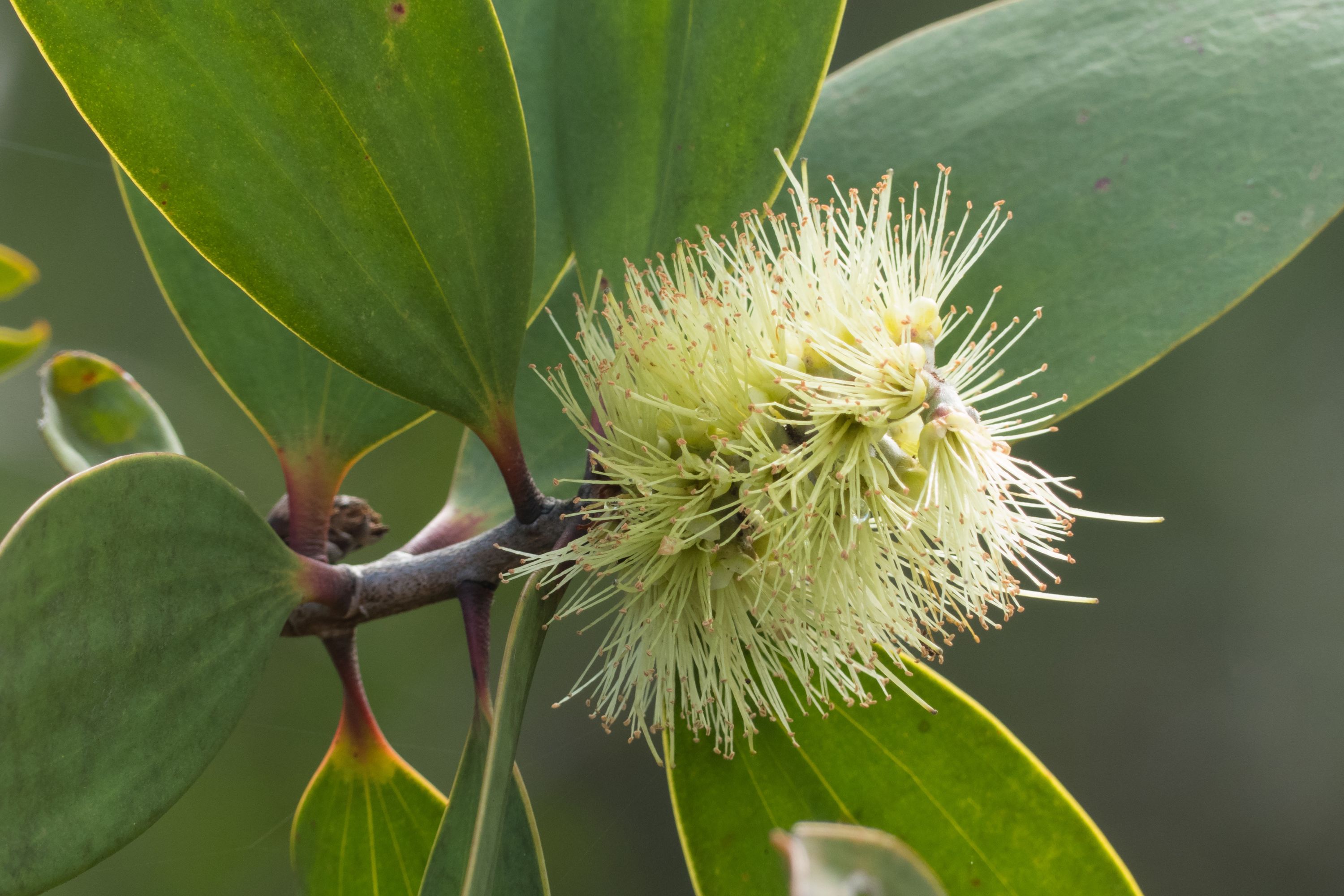Broad-leafed Paperbark
(Melaleuca viridiflora)

Description
Melaleuca viridiflora, commonly known as broad-leaved paperbark, is a plant in the myrtle family Myrtaceae, and is native to woodlands, swamps and streams in monsoonal areas of northern Australia and New Guinea. It is usually a small tree with an open canopy, papery bark and spikes of cream, yellow, green or red flowers. Melaleuca viridiflora is a shrub or small tree usually growing to 10 m (30 ft) tall, sometimes twice that height, with white, brownish or grey bark and an open canopy. Its leaves are 70–195 mm (3–8 in) long, 19–76 mm (0.7–3 in) wide, thick, broadly elliptic and aromatic. The flowers are cream, yellow, yellow-green or occasionally red and arranged in spikes on the ends of branch which continue to grow after flowering and sometimes also in the upper leaf axils. Each spike contains 8 to 25 groups of flowers in threes and is up to 100 mm (4 in) long and 55 mm (2 in) in diameter. The petals are 4–5.3 mm (0.16–0.21 in) long and fall off as the flower matures. There are five bundles of stamens around the flower, each with 6 or 9 stamens although the stamens are only weakly joined in bundles. Flowering can occur at any time of the year but most commonly happens in winter. Flowering is followed by fruit which are woody capsules 5–6 mm (0.20–0.24 in) long, scattered along the stem, each containing numerous fine seeds.
Taxonomic tree:







